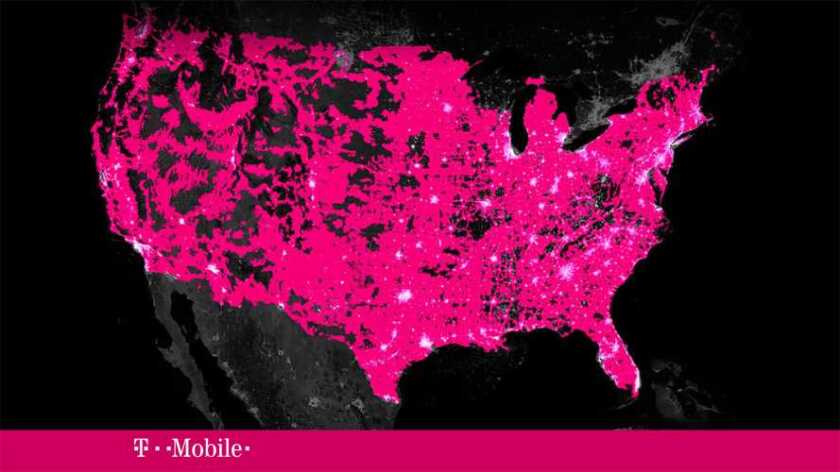The company, majority owned by Deutsche Telekom, is starting the invitation-only pilot for its in-home internet service on LTE, with the goal of connecting up to 50,000 homes this year in rural and underserved areas of the US.
John Legere, CEO of T-Mobile, said: “We’re walking the walk and laying the foundation for a world where we can take the fight to Big Cable on behalf of consumers and offer real choice, competition and savings to Americans nationwide.”
The pilot will be offered for $50 a month in areas where the company expects to deliver speeds of around 50Mbps through fixed unlimited wireless service over LTE – “with no data caps”, added T-Mobile US, which calls itself “the Un-carrier”.
The offer is in preparation for T-Mobile US’s expected merger with SoftBank-controlled Sprint, the fourth of the big US mobile operators, to create a third operator that’s more comparable with AT&T and Verizon.
But it is also readying New T-Mobile – the working title for the merged company – for the 5G era. AT&T and Verizon are both running pilot 5G fixed services as a stage to achieving full mobility once the standards are agreed. T-Mobile will upgrade its 4G service to 5G when available, it said.
In a filing to the Federal Communications Commission (FCC), Nancy Victory of T-Mobile’s lawyers, DLA Piper, said: “New T-Mobile will initially launch the home internet service using a 4G router operating over T-Mobile’s LTE network”, that will be provided at no extra charge.”
She added: “Shortly after the merger, the router will be upgraded to include 2.5GHz spectrum and 5G compatible hardware. The router also is expected to include mesh network capabilities to enable advanced WiFi connections with multiple network nodes to enhance quality as well as phone and video features.”
The company said that it plans to cover “more than half of US zip codes by 2024”, allowing service to 9.5 million households – but a map in Victory’s FCC submission was redacted from the public version. Nor has T-Mobile said where it will launch the trial home broadband service.
The company warned: “Due to LTE network and spectrum capacity constraints, the T-Mobile Home Internet pilot is limited by invitation-only to existing customers in specific areas, with the goal of reaching 50,000 households by the end of the year – or slightly less than 0.04% of US households.”
However, T-Mobile now claims wide coverage (see image) of the continental US with its LTE service.
It added: “Today, [US] consumers typically pay around $80 per month for wired in-home broadband service – $960 per year.”
T-Mobile US promised: “But if T-Mobile’s pending merger with Sprint is approved, with the added scale and capacity of the New T-Mobile, the Un-carrier plans to cover more than half of US households with 5G broadband service – in excess of 100Mbps – by 2024.”
In her FCC filing, Victory said: “The most recent industry data show that today 28.9% of US households, and 61.1% of rural households still have no in-home broadband service or only one provider offering in-home broadband.”






